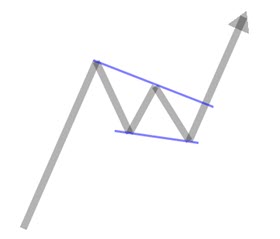Check the main analysis page again on Sunday for a two part series looking at the Gold SPDR (GLD) and Silver ETF (SLV). Part 1 looks at signals based on the 200-day SMA and EMA, and shows how to improve results. Part 2 tests signals using the Trend Composite and analyzes the price charts for GLD and SLV.
It was another week full of gaps. Tech-related ETFs rebounded and gapped up on Thursday. The old economy ETFs gapped down on Wednesday and did not partake in the tech rebound. Thus, we have up-gaps and short-term breakouts in tech competing with down-gaps and short-term pullbacks in old economy (industrials, steel, materials, energy). There are not a lot of setups in play right how. JETS still has a falling wedge breakout in play and XLU is forming a bull flag. IBB broke short-term resistance with a surge off long-term support and IHI broke short-term resistance after a sharp 50-67% retracement. ASHR is holding on to its breakout, but CHIX is looking feeble. Below are bullet points and the order of play:
Broad Market Analysis
- SPY Stalls in Gap Zone
- QQQ Dips below 10-week SMA
- IWM Extends its Consolidation
- Market Regime Remains Bullish
- BBB Yield Spreads Hit New Low
- Fed Balance Sheet Hits New High
- TLT Poised to Bounce?
- Oil Backs off Long-term Resistance
ETF Highlights
- ETF Ranking Table – Not Many New Highs
- New StochClose Signals: GLD, SIL, SKYY, EWJ
- Mind the Gap-Breakout (XLK, IGV, IPAY, SOXX, CIBR)
- XLI Holds Gap Down and Forms Wedge
- Harami and Gap Down for XLE and XLB
- XLU Goes for Short-term Breakout
- ITB with Weak Bounce and XRT Down Gap
- KRE Holds On to Breakout
- JETS Battles Breakout Zone
- IBB and IHI Break Short-term Resistance
- XES and FCG Hold ATR Trailing Stops
- Copper Complex Corrects within Uptrend
- SLX and XME Gap Down
- Monitoring Breakouts in ASHR and CHIX
- IEMG Shows Signs of Breakdown













